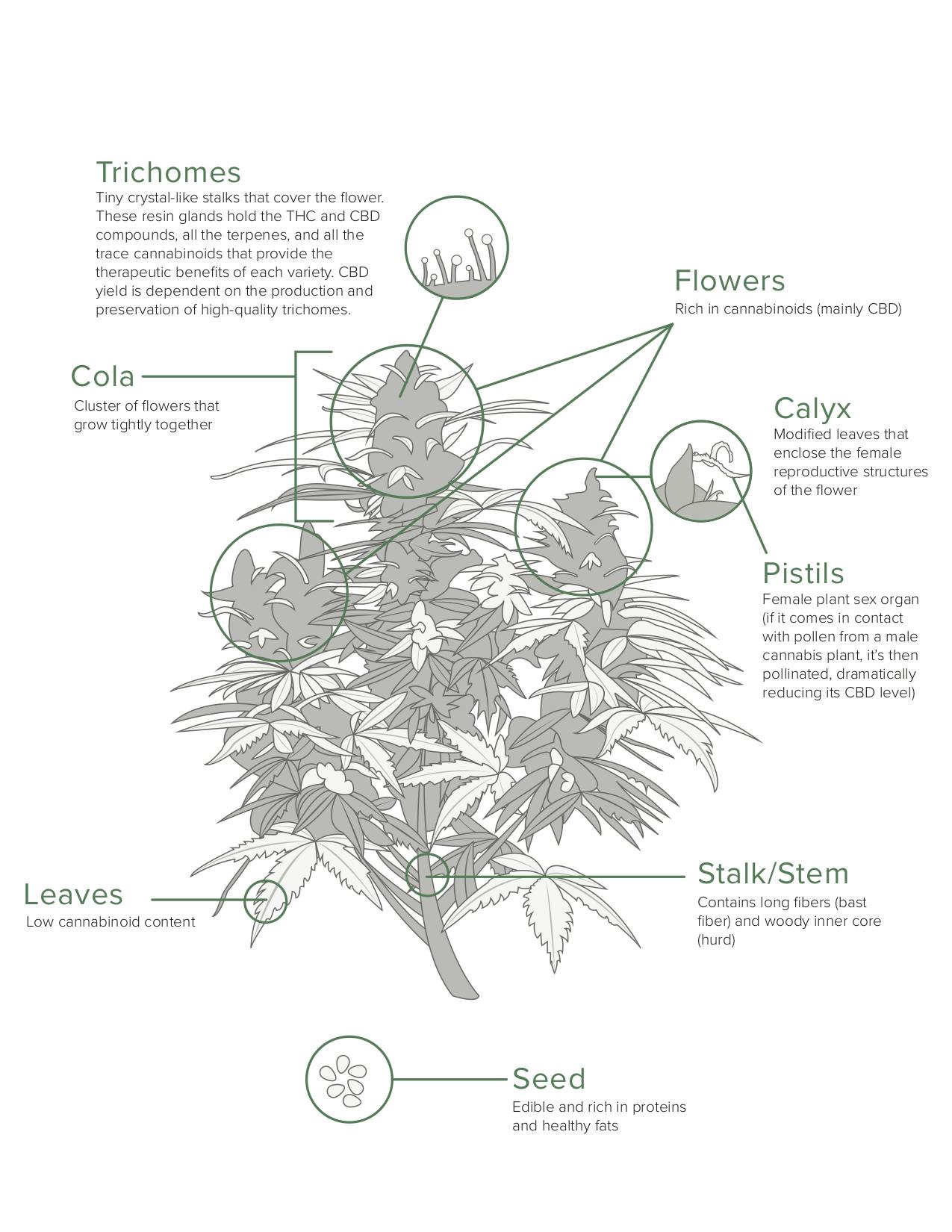An introduction to hemp and a brief overview of the current hemp market outlook.
As one of the longest-standing crops in the world, Cannabis sativa or hemp has a storied history. For more than 10,000 years*, the cannabis plant has been applied to a variety of uses from clothing to paper to medicines. From its use as a fiber or medicine, modern hemp is defined legally as a cannabis variety with a chemical profile containing less than 0.3% Total THC. With the passing of the 2018 Farm Bill, the number of acres designated for legal cultivation of hemp in the US has risen dramatically.
Hemp Farming Today**
- 463% increase in the number of acres licensed for hemp cultivation in the US from 2018 to 2019.
- Only 45% of acres licensed were actually planted.
- 98% of the hemp planted was for cannabinoid extraction.
- 50%-60% of those acres were successfully harvested.
In 2019, two main issues impacted several major hemp producing states: weather and supply chain inefficiencies. Weather impacted both yields and biomass quality due to the frequency of delayed planting, crop damage, mold/moisture issues, ultimately resulted in early harvesting. However, following a successful harvest, supply chain inefficiencies and distribution challenges accounted for significant losses and delays in revenue. These supply chain inefficiencies include bottlenecks or the lack of regionally accessible and trustworthy resources for harvesting, drying and storage, and processing.
Weather remains unpredictable, but adhering to recommended planting dates and building early relationships with processors to obtain purchasing contracts can dramatically help. Contracts provide assurance of the ability to harvest, dry and store quickly should weather change helping to mitigate potential pitfalls and can foster additional stability in this evolving market.
Though hemp biomass prices dropped from $35/lb to $10/lb over the course of 2019, farmers could still gross $30k/acre and net $20k/acre via mechanized farming and pre-processing. Seed prices seem unnaturally high and will surely drop over time, but today they're around 13% of crop value which is right in line with soy (10%) and corn (14%).
Physical Characteristics
Hemp is a dioecious plant, meaning it can be male or female. The hemp flower is rich in cannabinoids, with the vast majority grown today for CBD extraction. However, the whole plant can be harvested for individual uses or whole plant biomass.

Time to Flower Maturity
In addition to the differences in chemical profile and physical stature, hemp varieties can vary in time to flower initiation and total time to maturity. Varieties are bred to be autoflower (like our AutoCBD hemp seeds), or photosensitive.
Autoflower varieties, or day-neutral varieties, initiate flower development based on a specific number of heat units, or the days of sunlight a plant received. In the case of AutoCBD, for example, the plants mature for harvest in an average of 75 days, though this can vary depending on the temperatures in a specific region.
The typical photosensitive time period for maturity is about 120 days. In this type of plant, flowering is contingent upon a change in the light units, like when the season changes in late summer to support what is traditionally an October harvest.
Cultivation Methods
Depending on the specific goals, and the varieties grown, hemp can be cultivated in different environments. In general, hemp is extraordinarily adaptable and one of the most sustainable crops in commercial production. The variables that impact tillage include end-use, a seed’s consistency (or how much each seed varies within a seed production), the local precipitation and temperature ranges, among others. Another variable impacting hemp production, particularly in outdoor production, is the movement of pollen from neighboring hemp fields. Most outdoor production fields strive to have feminized hemp due to the higher cannabinoid yield, however, the occurrence of male plants is possible either from non-feminized seed or from pollen movement, and can negatively impact harvest value resulting in lower cannabinoid quality and less desirable seeds.
Outdoor cultivation is typically used for large-scale production requirements due to substantially lower production costs of growing from seed. Seed-based cultivation is only possible when varieties have been bred to produce uniform and consistent plants. Large-scale production needs include:
- Hemp production for cannabinoid extraction using seeds - either direct sow or transplant
- Seed Production
- Research
Indoor cultivation is not typically used for hemp production due to the intensive costs required to maintain production space.
Growers typically use indoor cultivation to:
- Grow THC-dominant varieties for craft or commercial production (higher revenue per pound supports higher production costs)
- Clonal production for transplanting
- Grow during an off-season
- Research
Farmers typically use greenhouses to:
- Start seeds or clones for transplanting
- Grow hemp for CBD/THC, or other cannabinoids
- Grow during an off-season
- Research
Forward Look
Per Whitney Economics “Field of Dreams” Report***, supply chain issues are impacting the industry resulting in roughly 1/3 of the licensed acres in the US coming to market. Additionally, early projections indicate there is currently one processor for every four growers and the average acres per processor is 138 acres, signifying constraints in the hemp supply chain beyond the field as we move into the 2020 growing season.
_____
Sources: *CannabisNow, 10 Facts About the History of Hemp. **Vote Hemp: 2019 State Licensed Hemp Acreage. ***Whitney Economics, THE FIELD OF DREAMS – An Economic Survey of the United States Hemp Cultivation Industry.